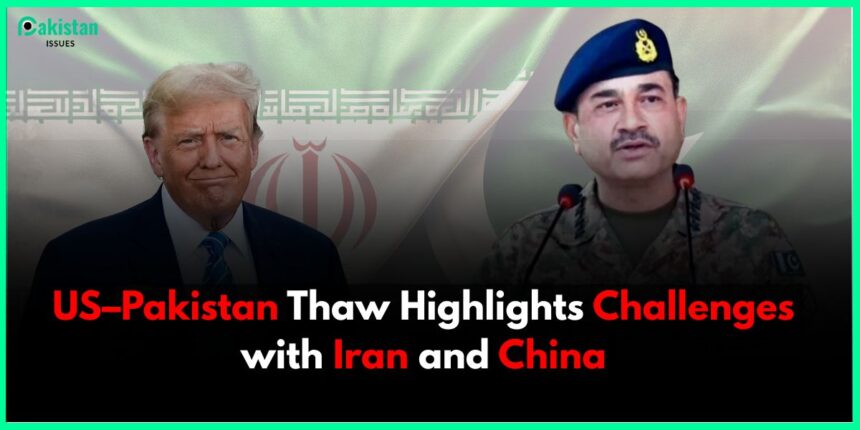Although Washington and Islamabad may be warming relations—former President Trump welcomed Pakistan’s Army Chief of Staff, Field Marshal Asim Munir at the White House—not all aspects of optimism are felt equally as there are indeed complicated regional challenges ahead. Chief among these are managing a relationship with Iran and continuing the long-standing relationship with China.
Balancing Iran’s Security Fallout
During official White House visitations, where Iran’s increasing attacks on Israel were front and center, Trump recognized Pakistan’s acute regional awareness, while Munir reiterated that Islamabad values diplomacy over confrontation.
Such calm reflects serious concerns for Pakistan; any Iranian collapse risks rejuvenating militant movements along their border—most importantly, Baluch separatists and jihadist actors like Jaish al-Adl. Islamabad worriedly believes that a destabilized Iran could become a security wellspring.
Managing the China Factor
Despite the warming ties with Washington, Pakistan remains firmly linked to Beijing. China provides much of Pakistan’s military hardware—from JF-17 planes to missiles—and is heavily invested in Pakistan’s economy through the China–Pakistan Economic Corridor (CPEC).
China’s oil dependency on Iran adds another layer: disrupted Iranian oil exports have hit Chinese supply chains, and Beijing condemned Israel’s strikes on Iranian territory.
This triangular relationship places Pakistan in a diplomatic squeeze: any warming with the U.S. must be balanced so as not to upset China, its principal economic and military ally.
Navigating Diplomatic Tightropes
Pakistan’s posture now seems to be a strategic tightrope walk:With China: reassuring Beijing of its loyalty using CPEC, military cooperation, and regional diplomacy.
With Iran: encouraging calm while working to strengthen its defensive posture on the border.
With the U.S.: re-positioning as a potential strategic partner – specifically for counter-terrorism, economic engagement and regional stability.
This balancing act of foreign policy illustrates the essential transition from a one-power alignment to one of managing relationships with three superpowers.
What’s at Stake
- Regional Security: Instability in Iran could flow into Pakistan, upsetting border dynamics—even as Pakistan shifts toward closer U.S. ties.
- Strategic Autonomy: Can Pakistan toe the line between China’s strategic front and U.S. expectations without damage to either alliance?
- Diplomatic Credibility: Pakistan’s word matters. Its insistence on diplomacy with Iran—while reconnecting with the U.S.—will be a test of its international reliability.
Final Take
The emerging US–Pakistan reconciliation is worthwhile, but realpolitik will not permit an easy shift. Given Iranian volatility and China’s strategic interests, Pakistan is going to have to maintain a delicate balancing act.
This isn’t just diplomacy, it is an exercise in strategy. As Thalif Deen of The Guardian observed, “the reset in relations […] will be tested by the two most important challenges: Iran and China.”
Pakistan now stands at a crossroads—not just reconciling with a historical ally, but staking its place in a rapidly shifting regional order shaped by renewed US interest, China’s long arc, and Iran’s fragility.










